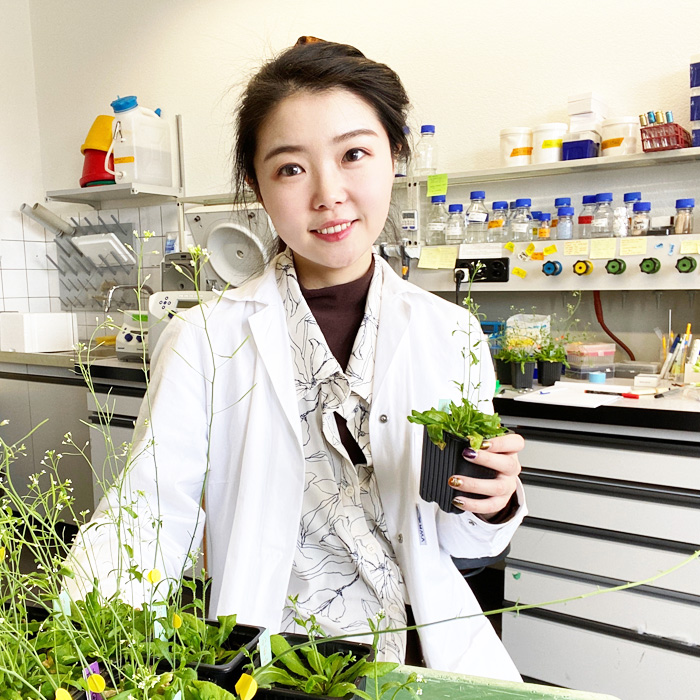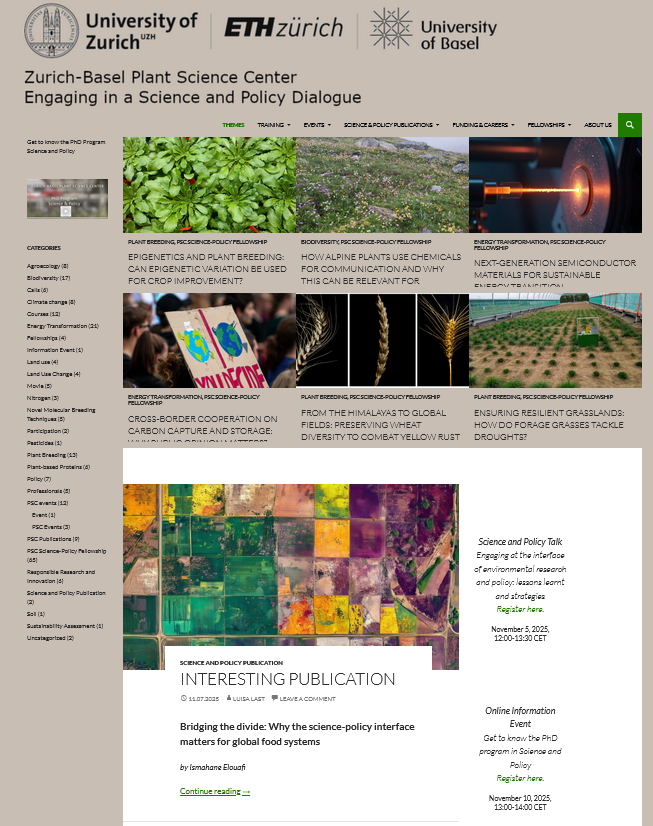Chromatin-based Controls in the Reproductive Lineage

Fellowship Duration: Oct 2020 – Sep 2024
PhD Student: Danli Fei (LinkedIn)
Principal Investigator: PD Dr. Célia Baroux, Department of Plant and Microbial Biology, University of Zurich, Switzerland
Project Partner: Dr. Peter Majer, Bitplane AG, Zurich, Switzerland
Research Fields: Plant Science, Microscopy Imaging and Image Processing, Cell Biology, Plant Development
Project Description
The nucleus is more than a genetic container. This organelle is the chief orchestra of cellular processes by controlling and fine-tuning gene expression in response to developmental and environmental cues. The combination of DNA and histone proteins that make up the nuclear content is often referred to as chromatin. The function of chromatin is packaging long DNA molecules into more compact, denser structures. Linker histones bind the nucleosome at the entry and exit sites of the DNA. The modification of this structural proteins in chromatin alters local chromatin structure and therefore gene expression.
In this project, we aim to elucidate chromatin dynamics principles underlying cellular reprogramming during developmental or physio- logical transitions. My project focuses on the somatic-to-reproductive cell fate transition which leads to germline differentiation and then seed formation. Our group has shown that in the model plant Arabidopsis, the differentiation of both male and female spore mother cells (SMC) is accompanied by large-scale chromatin reprogramming including the loss of linker histones (H1), chromatin decondensation, and large-scale epigenetic changes (She et al., 2013, 2015). Specifically, the goal of this project is to address the role and mechanisms of H1 dynamics during female sporogenesis in Arabidopsis, focusing on ubiquitinylation and the proteasome-degradation pathway. The purpose of this research is to contribute knowledge on the molecular and epigenetic mechanisms controlling plant reproduction, in turn influencing seed yield.
Planned outcomes of this project are the elucidation of the role of ubiquitination in H1 dynamics controlling in turn plant reproduction, as well as the higher visibility of image processing-based analyses to diversify research approaches in plant sciences. To strengthen my professional network, a three-month secondment is foreseen at Bitplane AG, focusing on the documentation of plant science case studies using Imaris as a resource for plant scientists to promote innovation. The role of Bitplane AG is to provide training in science application communication. The result will be published on the Imaris Learning Centre webpage https://imaris.oxinst.com/learning.
This fellowship is hosted by the Zurich-Basel Plant Science Center.
Activities and Publications
Doctoral thesis Exploring the Role and Mechanisms of Ubiquitin-Mediated Degradation of H1 during Reproduction in Arabidopsis
PSC Blog article (2024) The Role of Linker Histones in Plant Reproduction and Seed Formation
Co-authored peer-reviewed article in Plant Methods (2022) on A procedure for Dex-induced gene transactivation in Arabidopsis ovules
Conference talk at the Plant Epigenetics/SEB 2024 (Clermont-Ferrand, France, Jul 2024)
Conference talk at the 26th International Congress on Sexual Plant Reproduction (Prague, Czech Republic, Jun 2022)
Conference talk at the INDEPTH Main Meeting 2021 (Thessaloniki, Greece, Aug 2021)
Conference poster and poster award at the PSC Symposium 2021 Patterns in Nature and in Plant Sciences (Zurich, Switzerland, Dec 2021)
Outreach activity at the “Klimagarten 2085” (May 2022)
Secondment
Collaborating with a software company revealed the challenges of adapting image analysis tools to meet specific scientific needs, highlighting the complexity of developing algorithms capable of processing intricate biological data. During the secondment at Bitplane in Schlieren, Switzerland, Danli delivered science application seminars to the engineering team, promoting the concept of Output-Driven Innovation (ODI). To support this effort, Danli produced showcase materials and video tutorials to further promote Imaris and its applications within the plant science community. One of these tutorials, titled Mastering Image Analysis for Optimized Research with Imaris, is now available online. This webinar, designed for plant scientists and researchers, demonstrates how to leverage Imaris software for image processing in plant science. Imaris, renowned for its advanced imaging capabilities, has been instrumental in plant science research by offering sophisticated tools for detailed visualization and analysis of plant cell structures and dynamics.
Duration: Sep 2022 - Dec 2022
Satkeholder Workshop
The stakeholder workshop was organized as two stakeholder engagement workshops in Schlieren, Switzerland, in 2022 (Oct and Dec). They were titled, “How Imaris can help with Plant Science” and was attended by the engineering team of Bitplane in Switzerland, application specialists, and the sales and marketing team of Bitplane in Switzerland and USA. Imaris is the world’s leading Interactive Microscopy Image Analysis software. During this workshop, Danli presented and discussed publications showcasing how Imaris is used in plant science, as well as communicating about survey and analysis of all plant science publications that had made use of Imaris in the previous 5 years. The aims of the workshop were successfully accomplished, which included highlighting the successful functions of Imaris functions, identifying missing or inappropriate Imaris functions for future improvement and development, and showcasing material for motivating a broader use among plant scientists.


